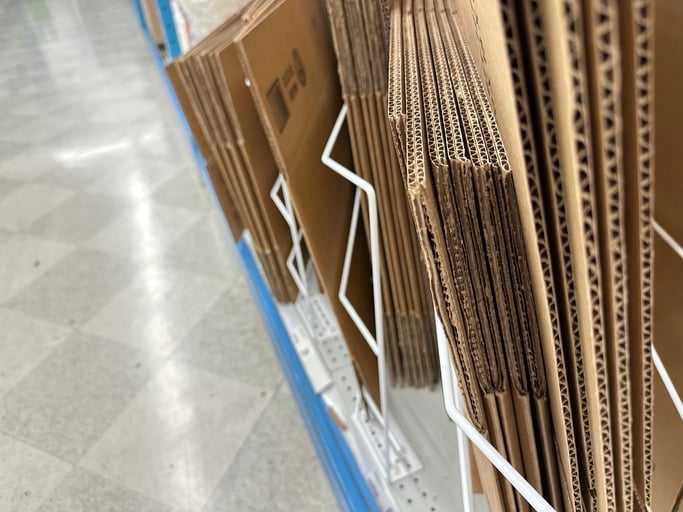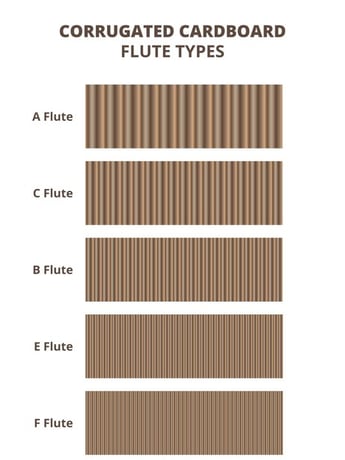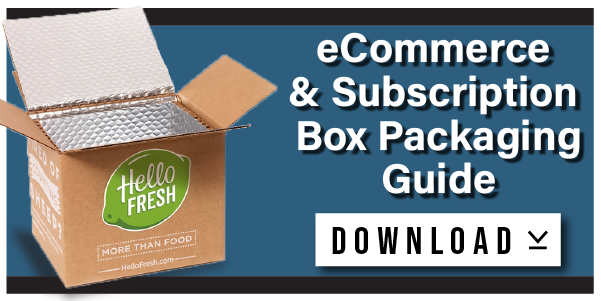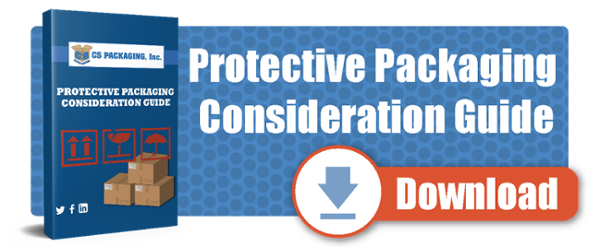
The corrugated box is a staple in the shipping industry, offering a reliable and cost-effective way to protect products during transit. But if you want to ensure your product's safety, it’s essential to understand corrugated box strength guidelines.
Knowing corrugated box makeup and related strength statistics can help you make sure that whatever you ship arrives safely at its destination for the best possible price.
By understanding the structure of corrugated boxes, you can better evaluate their suitability for different types of shipments based on how cost-effective the box strength is. Some products don’t warrant that additional investment in the stronger corrugated box.
3 Main Factors for Corrugated Box Strength
You know shipping materials must be sturdy and reliable, but what are the nitty-gritty details that separate the weak from the strong?
- Paper type and origin
- Base paper thickness
- Fluting
1. Paper Type
Not all paper used to make corrugated boxes is created equal. Specific paper qualities will depend on where the paper comes from and if any special additives have been used. For example, paper that originated in Taiwan may perform differently when used to make boxes than a paper with a similar weight and thickness from the United States.
Nearly all paper used to manufacture boxes contains recycled content. This is sustainable and helps keep costs low without sacrificing box performance. Although the boxes may vary slightly in color because of the variance in trees used, all paper used in North American box manufacturing has similar qualities and contains a similar amount of recycled content.
In certain cases, paper is coated or has artificial compounds added for additional strength and waterproofing qualities. These papers are ultra-specific, often only created in a vertical supply chain when the company designing the products is directing the exact makeup of their packaging material.
Packaging options and corrugated box makeup: Learn more from our free resource – Boxes 101
2. Base Paper Thickness
The thicker the paper, the stronger and more durable of a box it makes for carrying heavy loads.
Consider the following corrugated strength chart for guidance on the best combination of liner and corrugated medium:
Thinner papers, on the other hand, are better suited for transporting lightweight items. To ensure your product reaches its destination safely, choose a box with suitable paper thickness based on what you're shipping.
3. Fluting
Fluting refers to the corrugated box's fluted or wavy layer within the box walls, which provides extra support and protection for whatever you’re shipping. Different types of boxes can have different types of fluting depending on the intended purpose, with some providing more cushioning and others offering increased structural stability.

There are 5 common flute types:
F-flute, which is rarely used. This type is very thin, good for print registration but does not provide a lot of protection.
E-flute, ideal for lighter loads because it has more corrugations per linear foot. The e-flue has a thin profile with many small flutes, which helps print quality.
- B-flute, ideal for protecting products that require extra shock absorption during transit. This is a very common flute profile used in subscription boxes.
C-flute, provides more cushioning than E or F-flutes. C-flute was developed as an all-purpose flute and is almost always used for regular slotted containers.
A-flute, also has lower corrugation counts and provides more thickness and cushioning. This type has 33 flutes per foot.
Looking for more information on shipping products for a subscription service? Consider this resource:
Determining the Best Box Strength for Your Product
Damage to goods can cause not only monetary losses but also reputational damage to a business. While its important to choose sufficient protection, it is optimal to pick the most cost-effective board grade.
Consider the following factors:
- Testing
- Box style
- Flute size
Box Strength Testing
All U.S. boxes are held to an official strength standard. There are two tests to determine box strength:
- Mullen Test: Offers an idea of the bursting strength of the corrugated box. This indicates the amount of weight that can be applied before the wall of the box bursts. This test was the only one available for many years. However, when recycled materials were introduced into corrugated box manufacturing, Mullen test results declined. This created an opportunity for a new test to show box strength.
- Edge Crush Test: Indicates the top-to-bottom stacking strength of the box. With the inception of the edge crush test, 32ECT boxes have taken the top spot in terms of affordability and reliability during transit.
NOTE: With both tests, a higher number indicates greater strength.
Box Style
There are many box styles, not to mention sub-varieties within each type of corrugated box design. The intended use and product presentation play a big part in choosing the right style. For instance, consider these three popular styles:
- Slotted container: The easiest type of box to make and available in a large variety of sizes. Made from a single piece of corrugated that meets at the bottom. This type of corrugated box includes the regular slotted container, or RSC, which is a rectangular box with four flaps on both the top and bottom.
- Folders: Also made of one piece of corrugated material, but with an unbroken bottom surface. This provides a better unboxing experience, making this style of box popular with subscription box vendors.
- Telescoping: Similar to a tray with an unattached lid, this style has a bottom and top that fit together but aren’t connected. In the full telescope design, the top fits over the bottom completely, while a design-style container has a cover that fits without overlapping fully.
Flute Size
Choosing the right flute size means appropriate box strength and thickness, as well as improving structural stability and providing a better substrate to enhance applied prints.
Box manufacturing does not depend on the economy, the flutes are flutes, papers are papers, and board grades are board grades no matter what.
Using corrugated boxes with the correct strength and structure is one of the best ways to ensure that products arrive at their destination safely. Knowing corrugated box strength guidelines and understanding the structure of corrugated boxes can help you determine which type and combination is most suitable for your product.
By understanding corrugated box makeup and related strength statistics, you can determine the best box flute size.
Product Protection: How to Reduce Returns in e-Commerce
Corrugated boxes offer a reliable and cost-effective way to protect products during transit. Knowing corrugated box strength guidelines means that your product will surely make it to where it needs to go in top condition.
This can not only reduce product damage or loss, but also save your business money in the long run.
By reducing cases of product damage, sellers can ensure their customers are satisfied and keep returning for business – but not returning their boxes.
Being proactive today means reduced return totals tomorrow.
Know Your (Box) Strength
Did you know that F Flutes are perfect for retail packaging?
Check out our resource for more:
.png?width=845&height=137&name=Slice%203%20(23).png)

